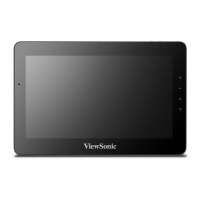What makes a good education projector?
In the education sector there is a global drive to
improve results and few organisations are moni-
tored to the same extent as schools.
Providing the best possible classroom experience
is part of the winning formula.
n Resolution: With powerful graphics and
displays available in even basic computers the
image quality and resolution has increased. Plug
those systems into a legacy projector and there
is often a disappointing result.
n Colour degradation: Over time projectors
deteriorate and this becomes highly noticeable
when new projectors are deployed alongside older
models. As presenters and students move from
classroom to classroom and use different solu-
tions comparison is easy.
n 3D: As 3D technology becomes more acces-
sible and pervasive people will become ac-
customed to it and in the future it will become
expected for teaching certain subjects.
n Interactivity: Again people will become very ac-
customed to the interactive whiteboard and the
benefits they bring so using a PC and projector
will become a secondary solution.
EDUCATION
n Cost: ViewSonic understands that education
customers are cost-conscious and that there has to
be a strong economic case for replacing equipment.
It is also essential that technology purchases drive
a strong return on investment against a low cost of
ownership.
n Power: Projectors that are only a few years old
will consume more power than many current models.
ViewSonic projectors not only reduce the environ-
mental impact but also have a lower operating cost,
against a backdrop of mounting electricity costs.
n Consumables: Replacement lamps for projectors
are expensive and this adds to the overall cost. Also
consider how affordable projectors have become in
recent years and it starts to make sense to replace
and recycle your old projector.
n Facilities: Each service visit has either a direct
or indirect cost to the organisation and this has to
be taken into consideration – a newer solution will
generally mean a lower volume of service visits.
n Hidden costs: There are a host of costs that are
more difficult to identify – for example, teachers
wasting time sourcing alternative projectors, peer
support and costs of rescheduling.
5
Used in combination
with interactive whiteboard
0.6~0.8
Short throw
0.9~1.4
Mid short throw
1.5~1.8
Standard throw
1.9~2.1
Standard throw
Ta ble-front applicationTypical LCD projectors,
majority for education usage.
Typical DLP projectors,
majority for co-operate usage.
PJD6381
PJD7383
PJD7383i
PJD7583wi
PJD7583w
PJD5152
PJD5352
PJD6211p
PJD6221
PJD6241
PJD6251
PJD6531w
Pro8400
Pro8450w
Pro8500w
Throw ratio categorisation
Over 2.1 (Long throw):
Achieved by optional lens,
used for large concert hall.
1.8~2.1 (Standard throw):
Typical DLP projectors,
majority for corporate usage.
1.4~1.8 (Standard throw):
Typical LCD projectors,
majority for education usage.
0.9~1.4 (Mid short throw):
Table-front application.
0.6~0.8 (Short throw):
Used in combination with
interactive whiteboard.
Under 0.6 (Ultra short throw):
Use mirror technology to
achieve, combines with
interactive whiteboard.
ViewSonic projectors have short
throw ratios designed just for
educational environments. In
addition to enjoying premium
image quality, surface exibility
and instant interactivity, you also
save the cost of reinstalling
ceiling mounts.

